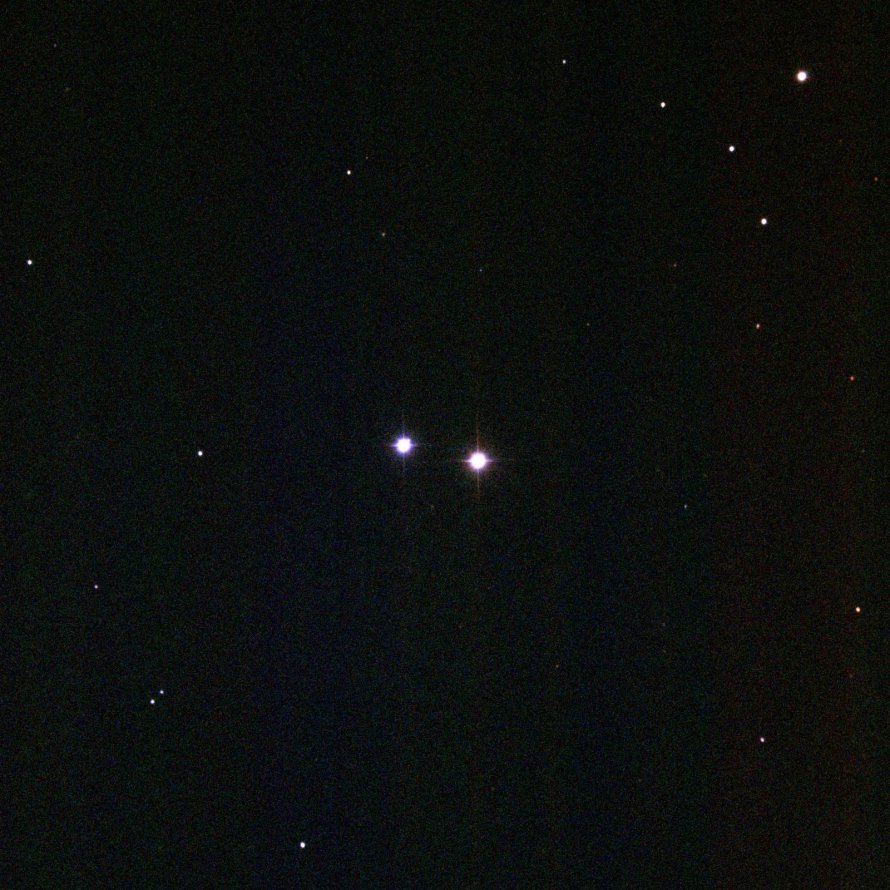M40 (WNC 4) - Winnecke 4
Messier 40 (WNC 4), also known as the Winnecke 4, is a double star located in the constellation Ursa Major, in the Orion Arm of the Milky Way Galaxy in the Local Group of galaxies. M40 is 1,100 | 460 light years away from Earth.
M40 is best viewed during early spring, is magnitude 9.6 | 10.1, and can be viewed with small telescope. M40 is in apparent size. For reference, the full moon is 30'.
Observing difficulty: Easy
- Name:
- Winnecke 4
- Type:
- double star
- Constellation:
- Ursa Major
- NGC or IC:
- WNC 4
- Magnitude:
- 9.6 | 10.1
- Viewing:
- small telescope
- Distance (light years):
- 1,100 | 460 LY
- RA:
- 12h 20.0m
- Dec:
- 58 22'
- Season:
- early spring
- Milky Way location:
- Orion Arm
- Galaxy group:
- Local Group
- Messier Marathon #:
- 39
* The naked eye can see up to magnitude ~7-8 objects under ideal dark sky conditions.
A Curious Double Star in Ursa Major
Messier 40 (M40 or Winnecke 4) is a double star located in the constellation Ursa Major, the Great Bear. It is among the less-known and less-observed objects in Charles Messier's catalog, primarily due to its relatively low brightness. However, its unique nature and the story of its inclusion in the catalog make it a point of interest. This article will delve into M40's characteristics, its historical background, and guidance for locating and observing it.
Historical Background
Unlike the majority of objects in Messier's catalog, which are nebulae, star clusters, and galaxies, M40 is a double star. It was added to the catalog by Messier himself in 1764. Messier was responding to a report by Johann Hevelius, a 17th-century astronomer, who claimed there was a nebula at this location. Messier found no nebula, only the double star, but recorded the star pair in his catalog nonetheless. The stars are now also known by the designation Winnecke 4, after the astronomer who rediscovered and measured them in 1863.
Physical Properties and Magnitude
The M40 system consists of two stars which appear close together in the sky but are not gravitationally bound, an optical double rather than a binary system. The brighter star has a magnitude of about 9.65 and the fainter star of about 10.10. These magnitudes make M40 challenging to observe without the aid of a telescope.
The stars are separated by approximately 50 arcseconds in the sky. They are quite distant from each other in space, with the primary star about 510 light-years from Earth and the secondary approximately 360 light-years away.
Astronomical Significance
M40 holds an unusual place in the Messier catalog. It's not a bright or remarkable double star, and it's not representative of the deep sky objects that Messier was usually documenting. However, its inclusion in the catalog reflects the history of astronomical observation and the challenges faced by astronomers in Messier's time when they were working to understand and catalog the heavens.
Finding and Observing M40
M40 is located in the constellation Ursa Major, which is circumpolar and visible all year round from many parts of the northern hemisphere. It lies just to the northwest of the star Megrez, which joins the bowl and handle of the Big Dipper asterism.
Due to its low magnitude, M40 is best viewed with a telescope. Small telescopes will resolve the two stars, while larger telescopes may reveal color differences between them. Under good observing conditions, the fainter star appears slightly orange compared to its companion.



